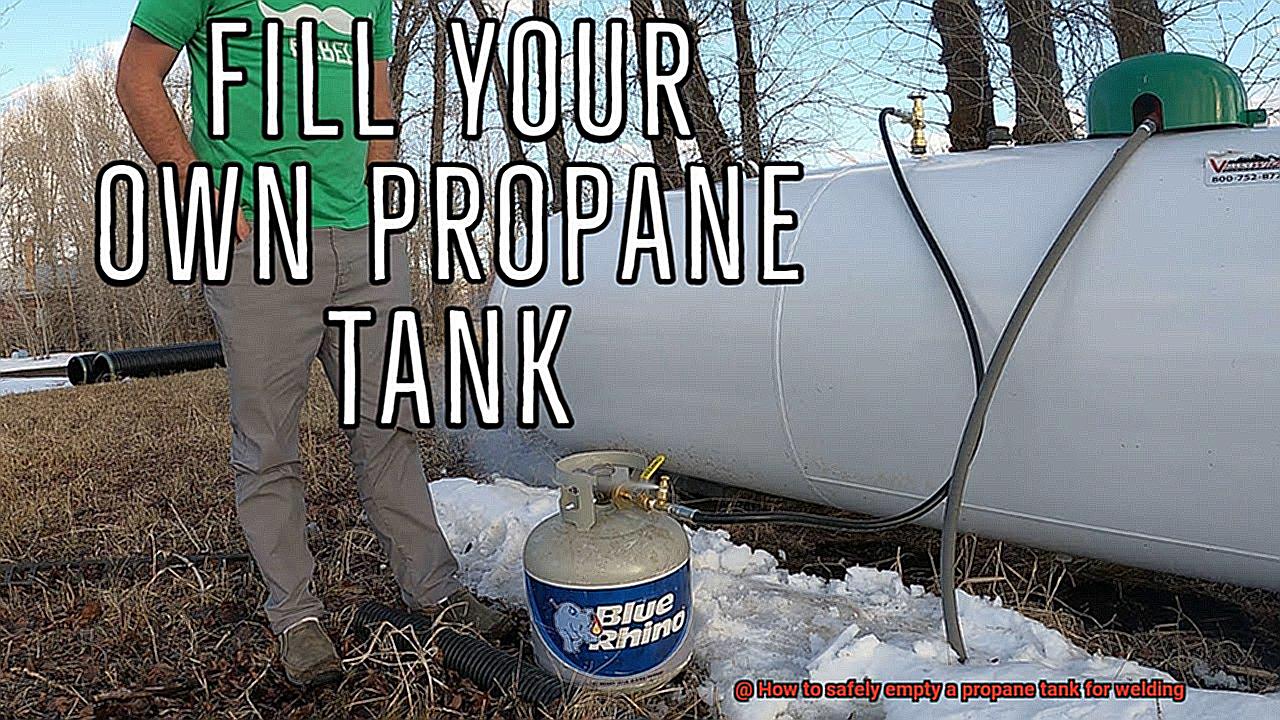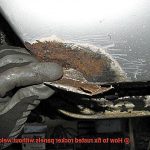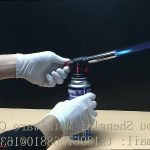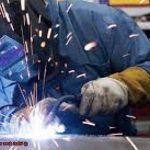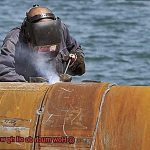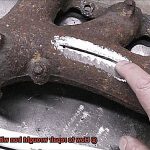Are you a welder or just someone who has a propane tank and wondering how to safely empty it for welding?
Propane tanks are pressurized containers that can be dangerous if not handled properly. But don’t worry, we’ve got you covered.
In this blog post, we will guide you through the process of safely emptying your propane tank for welding. From the tools you need to the proper safety measures, we’ll cover everything.
You’ll learn about the different types of propane tanks and the best methods for emptying them safely. Whether you’re a professional welder or a DIY enthusiast, emptying a propane tank for welding can be intimidating.
But with our expert guidance and tips, you’ll be able to do it with confidence in no time. So if you want to learn how to safely empty your propane tank for welding, keep reading.
We’ve got all the information you need to know to do it correctly and safely.
Safety Precautions When Emptying a Propane Tank
Contents
- 1 Safety Precautions When Emptying a Propane Tank
- 2 Turning Off the Valve and Disconnecting the Regulator
- 3 Checking for Leaks in the Tank or Regulator
- 4 Burning Off the Gas from Small Tanks
- 5 Using a Transfer Pump to Empty Large Tanks
- 6 Following Safety Instructions When Using a Transfer Pump
- 7 Conclusion
As someone who has extensive experience with propane tanks, I understand the importance of safety when it comes to emptying them.
Propane is an incredibly flammable gas that can cause serious harm to people and property if not handled with care. Therefore, it is crucial to take all necessary precautions when emptying a propane tank.
First and foremost, it is essential to wear protective gear. You should wear gloves, goggles, and long-sleeved clothing to protect yourself from any potential leaks or spills.
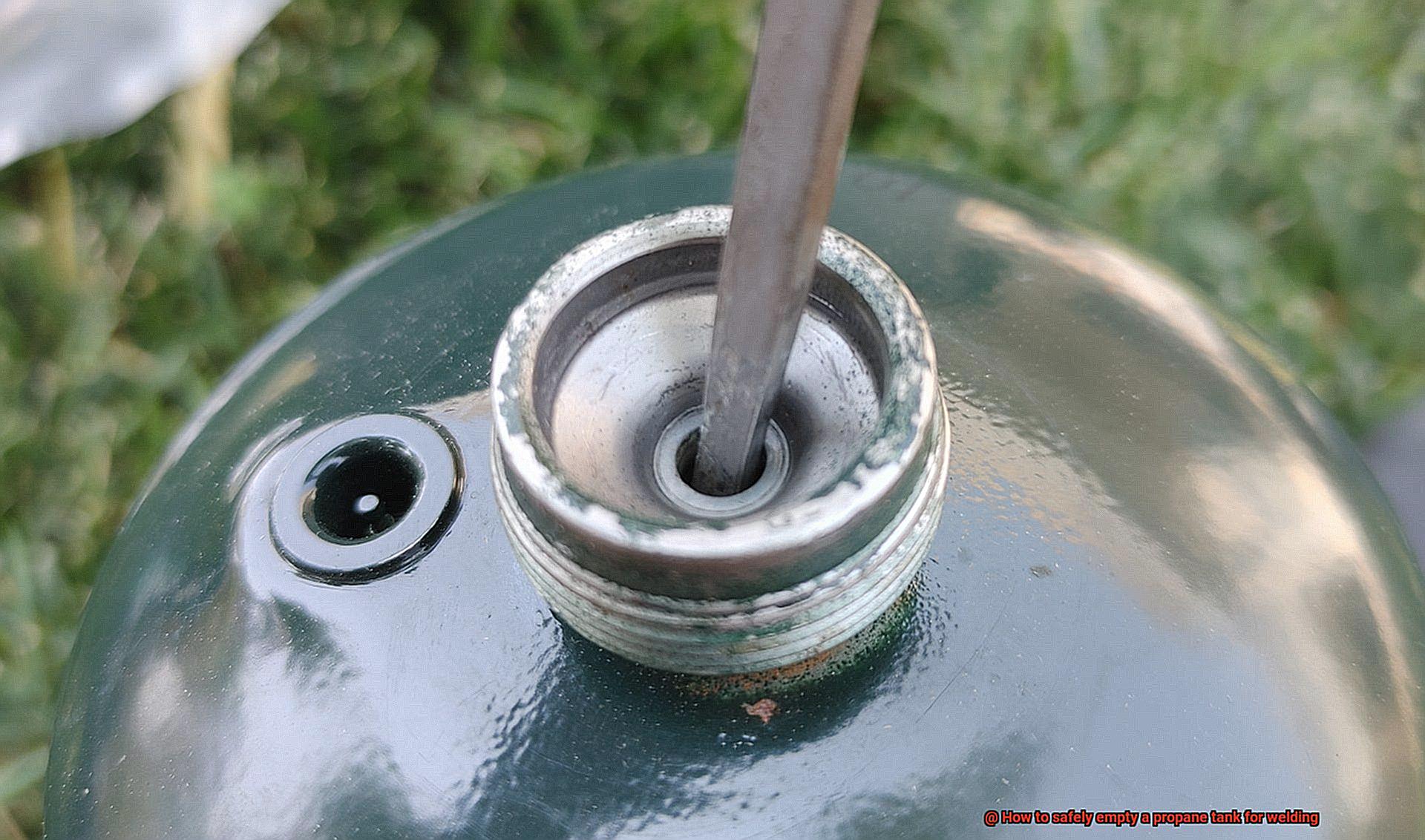
Wearing a respiratory mask is also highly recommended as it protects your lungs from any hazardous fumes. Another critical safety measure is ensuring that the area where the tank is located is well-ventilated.
Propane gas is denser than air, which means it can accumulate in low-lying areas such as basements or pits. Ignition sources in these areas like sparks or flames can lead to an explosion or fire.
Hence, it’s vital to open windows and doors to allow for proper ventilation. Before starting the process of emptying a propane tank, it is crucial to turn off all sources of ignition in the area.
This includes electrical appliances, pilot lights, or flames. Any spark or flame can ignite the propane gas resulting in a dangerous explosion.
It is also essential to keep a fire extinguisher close by in case of an emergency. A fire extinguisher can help contain a leak or spill before it becomes more dangerous.
Lastly, one must follow proper procedures when disconnecting and emptying the propane tank. This involves using the correct tools and techniques for disconnecting the tank valve and ensuring that all propane gas has been purged from the tank.
Emptying a propane tank may seem daunting, but following these safety precautions ensures that the process remains safe and efficient.
Turning Off the Valve and Disconnecting the Regulator
In the previous section, we talked about how important safety measures are when emptying a propane tank for welding.
Now, let’s dive into the critical steps of turning off the valve and disconnecting the regulator. Think of the valve as the traffic light for propane flow.
It’s located at the top of your tank and controls the flow of gas. To ensure your safety, make sure that all ignition sources are removed from the area, and wear proper safety gear like gloves and eye protection before beginning this step.
Using a wrench tool, turn the valve clockwise until it is fully closed. This step is like putting a lid on a pot to prevent any steam from escaping.
It’s essential to ensure that the valve is tightly closed to prevent any gas leaks. Next up, it’s time to disconnect the regulator.
The regulator is like the bridge that connects your propane tank to your welding equipment and controls gas flow. Using a wrench tool, unscrew the connection between the regulator and the valve.
This step is like unplugging your phone charger from the wall socket. It’s crucial to note that there may be some residual gas left in the lines after disconnecting the regulator.
To remove any remaining gas, open your welding torch and let it burn off any excess gas in a safe, ventilated area. Think of this step as blowing out a candle after making a wish.
Checking for Leaks in the Tank or Regulator
Before diving into your project, it’s crucial to ensure that your tank and regulator are free from leaks.
Not only can leaks cause dangerous situations, such as fires or explosions, but they can also compromise the quality of your welding. So, let’s go over some essential safety measures.
First, turn off the valve on the propane tank and close the regulator valve. Then, grab some soapy water and apply it to the connections of the tank and regulator.
Keep a watchful eye out for bubbles forming – this indicates a leak. Tighten any loose connections and keep testing until there are no more bubbles.
While you’re at it, inspect the hoses and fittings for any cracks or wear and tear. Don’t hesitate to replace any damaged parts before proceeding with emptying the tank.
But wait. There’s one more step to maximize safety.
It’s highly recommended to use a propane gas detector to ensure there are no leaks. These detectors can sense even small amounts of propane gas and provide an added layer of safety.
By taking these precautions, you can confidently empty your propane tank without any worries. Think of it like putting on your seatbelt before hitting the road – it’s an essential step to protect yourself and others.
So, take a deep breath, double-check for leaks, and get ready to tackle your welding project with ease.
Burning Off the Gas from Small Tanks
Before beginning any welding work, always check for leaks, inspect hoses and fittings, and use a propane gas detector. Safety should always be your top priority – it’s like putting on a seatbelt before hitting the road.
Now, onto the main event: burning off the gas from small tanks. This method is designed for propane tanks weighing less than 20 pounds.
First, ensure that you’re in a well-ventilated area away from any flammable materials or sources of ignition. It’s crucial that the tank is properly secured and can’t tip over during the process.
Once you’re set up, open the valve on the tank and light a flame using a torch or another ignition source. Place the flame at the top of the tank where the gas can escape freely.
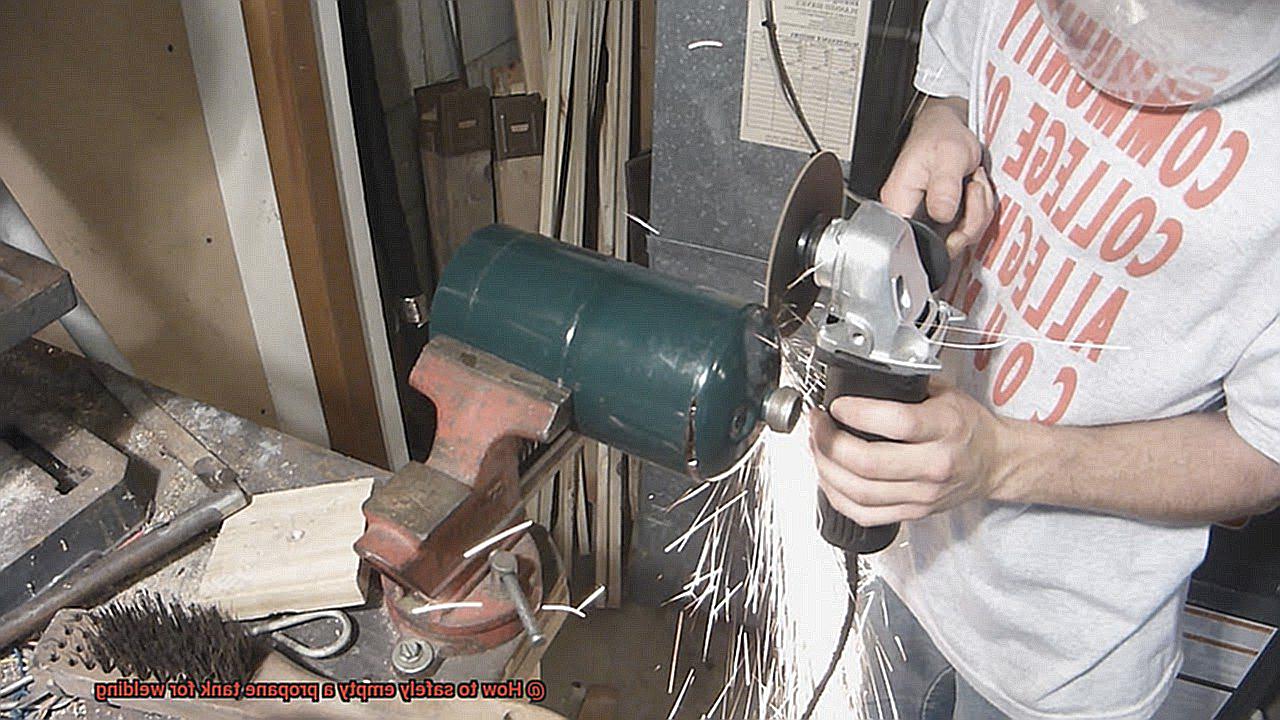
As the propane burns off, watch as the flame gradually decreases in size until it goes out completely. It’s important to note that this method is only appropriate for small tanks and should never be attempted with larger tanks or damaged ones.
And never attempt to burn off the gas from a tank indoors or in an enclosed space – that’s just asking for trouble. In conclusion, burning off the gas from small tanks is a safe and effective way to empty propane tanks for welding – as long as you know what you’re doing.
Always prioritize safety and take necessary precautions before starting any welding project.
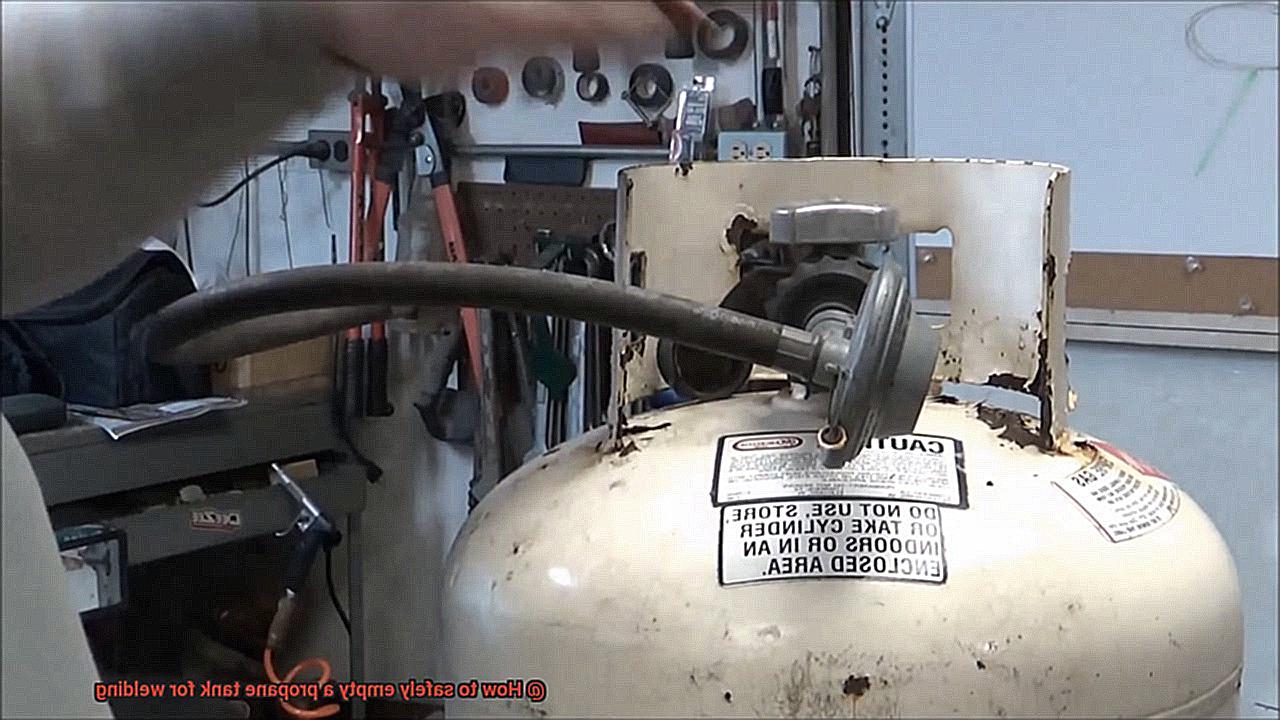
Using a Transfer Pump to Empty Large Tanks
These pumps are designed to move liquids from one container to another, making them the perfect tool for this task. However, it’s crucial to choose the right pump for the job.
Propane tanks are pressurized vessels, so it’s essential to use a pump that is rated for propane and can handle the pressure. To get started, connect the transfer pump to the propane tank by attaching the intake hose to the valve on the tank.
Be sure to secure the connection tightly to prevent any leaks or spills. Next, attach the outlet hose to the container where the propane will be transferred.
Before turning on the pump, prioritize safety by wearing appropriate safety gear like gloves and goggles. Also, ensure that there are no sources of ignition nearby and have a fire extinguisher on hand in case of an emergency.
Once everything is in place, turn on the transfer pump and let it run until all of the propane has been transferred. Keep an eye out for any leaks or other issues that may arise during this process.
It may take some time depending on the size of the tank and flow rate of your pump, but be patient. After all of the propane has been transferred, turn off the pump and disconnect all hoses from both tanks.
It’s essential to store the propane in a safe location away from any sources of heat or flame. In conclusion, using a transfer pump is an effective way to safely empty large propane tanks for welding.
Following Safety Instructions When Using a Transfer Pump
If you’re planning on using a transfer pump to empty a propane tank for welding, safety should be at the forefront of your mind.
As an expert in this field, I know that following proper safety instructions is essential to avoid accidents and injuries. To start, ensure that the transfer pump you’re using is specifically designed for propane and can handle the pressure.
Before getting started, make sure to wear appropriate safety gear, such as gloves and goggles, and have a fire extinguisher nearby. Additionally, it’s crucial to store the propane in a safe location away from any sources of heat or flame.
When connecting the transfer pump to the propane tank, it’s important to use the correct fittings and adapters. Tighten all connections with a wrench and check for leaks using a gas detector instead of an open flame.
During the transfer process, monitor the pressure inside the tank closely and never exceed the maximum limit to prevent rupture. Finally, disposing of any leftover gas is just as important as getting started safely.
Be sure not to vent or release propane into the air as it can be hazardous to both people and the environment. In conclusion, always prioritize safety when using a transfer pump to empty a propane tank for welding.
By following these safety instructions and taking appropriate measures, you can minimize the risk of accidents and ensure a successful transfer process.
mciCgu8Vxi0″ >
Conclusion
In summary, emptying a propane tank for welding is a task that requires knowledge, tools, and safety precautions.
This article has discussed various methods for emptying propane tanks based on their size and type. However, regardless of the approach used, safety should always come first.
It’s crucial to wear protective gear such as gloves, goggles, and respiratory masks before starting the process. Additionally, the area where the tank is located should be well-ventilated to prevent any accumulation of propane gas.
All ignition sources must be turned off in the area before starting the process. Proper procedures and tools must be used when disconnecting and emptying the propane tank to ensure that all propane gas has been purged from the tank.
Checking for leaks in both tanks and regulators is also essential before beginning any welding work. Selecting equipment rated for propane is vital when burning off small tanks or using a transfer pump for larger ones.
